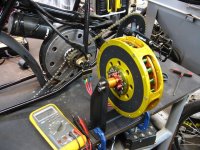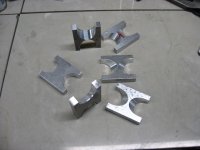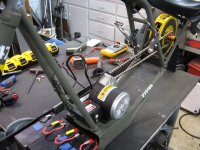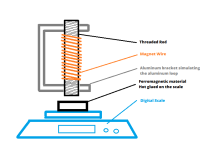wturber
1 MW
The obvious solution:
[youtube]seWSUOXUiao[/youtube]
[youtube]seWSUOXUiao[/youtube]
fechter said:Another fun test is to short the phase wires and then turn it to see how strong the resistance is.
APL said:I ordered a tachometer, and as soon as it gets here, I'll try to get a Kv. I tried to measure phase ohms,
but my meter isn't up for it, I can't really get anything definitive.
I was able to cut back the plastic insulator, center the stator, and give it another spin test, and noticed
that it definitely has a lot more drag than normal. Thought maybe it was the bearings, but after checking
them out, it's not. Feels like wading through a strong river current. Something magnetic.
Not good. Maybe your right about shorted turns, or aluminum eddy currents, but the other thing that
has always bothered me about this layout is the bottom side of the cores, and magnets, being so close
to each other. Theres really no separation there. On the top side theres plenty of separation.
My air gap is only .040" which could be a little too close? I can try spacing it out another millimeter, and
see what happens.
Yes of course you would have to do this in steps with cool down time between.larsb said:If you short without load you'll likely burn the motor in no time. It will be like 0-x kW of heat into the windings.
An oven heater coil and a bucket of water would do the trick





APL said:Thanks Dui, ni shuo de dui. Spacers are 1/2" flat stock, and I used a large end mill and just plunge cut
the pieces in the vice. Mostly eyeballed it, and massaged it as I went. A couple of chamfers on the tops,
and a bit of belt sanding. The only really precise cuts were the length of the spacers, which determines
air gaps.
APL said:The aluminum stator plates are indeed a possible culprit, and have been discussed several times. As we dive
into this mystery, the plan is at some point, to cut the plates at each magnet and break the loops.
If that makes a difference, then I will remake them out of something nonferrous, such as glass board.

APL said:OK. so then I finally checked for a short to the case, and sure enough ,.. it was shorted on all three.
Don't know why I didn't check that in the beginning,.. I'm claiming 'old age'.
